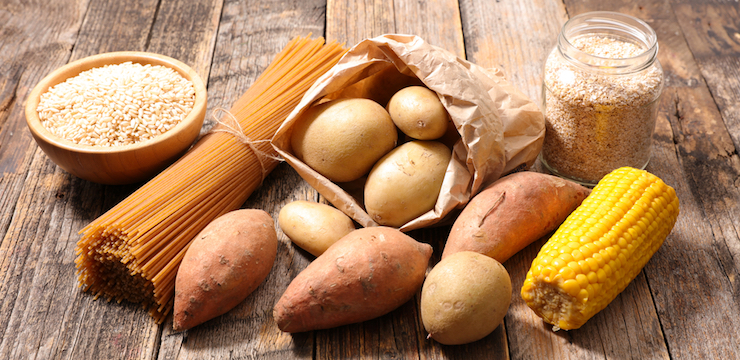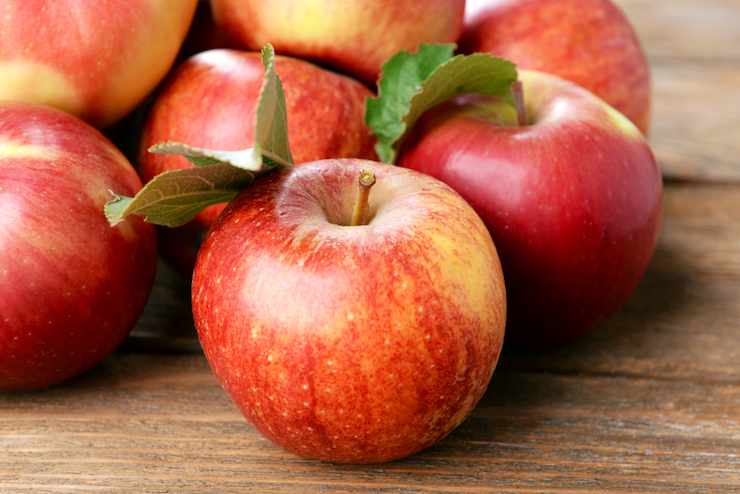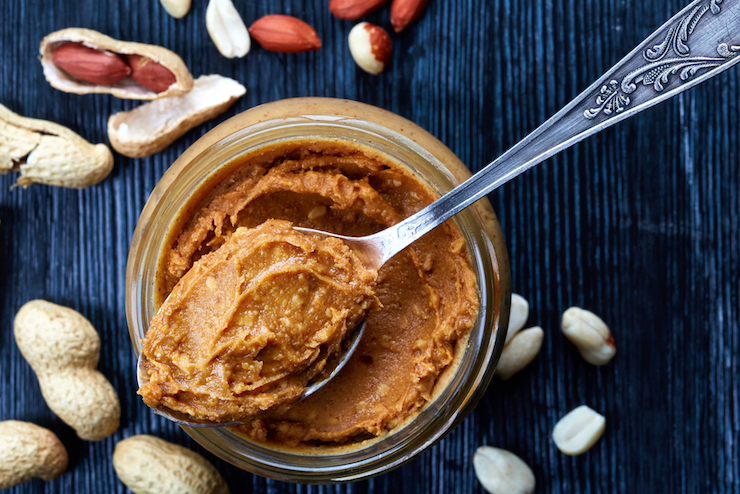Gallucci On The Best Nutritional Advice for Soccer Players
Here is the latest Injury Prevention and Treatment advice from John Gallucci, Jr., MLS Medical Coordinator.
Gallucci is the Medical Coordinator for Major League Soccer (MLS), overseeing the medical care of 600 professional soccer players and an expert in injury prevention, rehabilitation, sports medicine and athletic conditioning. Gallucci is the former Head Trainer of the New York Red Bulls MLS team and is a Sports Medicine consultant for professional athletes in the NHL, NFL, NBA, MLB, and USA Wrestling. Gallucci, Jr. is also President of JAG Physical Therapy & JAG Pediatric Therapy.
Soccer players trying to reach peak performance need to rely on their bodies and we have the same information that America’s top players are receiving.
Youth Soccer Players: Soccer Athlete Nutrition
Youth and teenage athletes must develop good eating habits that will last them a lifetime. This is the best time to introduce a healthy lifestyle, so they can make the connection between input and output…
what we put into our bodies is directly linked to what we get out of our bodies.
A bag of chips won’t get you through a 90-minute game in the hot afternoon sun. Good nutrition will not only benefit the soccer athlete; healthy eating habits are important for people of every age and form the foundation for healthy living.
Macronutrients

There are three basic macronutrients that make up the basis of our diet: carbohydrates, proteins and fats. Each macronutrient is essential in its own right, and is a necessary component for a healthy, well-rounded diet. A basic guideline is to eat meals consisting of 65% carbohydrate, 20% protein and 15% fat. Of course, estimations can be made, but the only true way to accomplish this is to weigh our foods.
Related Article: JOHN GALLUCCI ON INJURY PREVENTION and SOCCER PLAYERS: THE TRUTH ABOUT SPORTS DRINKS
The soccer player should have a healthy-eating checklist that includes the following:
- Eat breakfast seven days a week
- Eat three to four balanced meals at the same time each day
- Have a nutritious mid-morning snack
- Eat two to three pieces of fresh fruit per day
- Eat four to five servings of fresh vegetables each day (not out of a can!)
- Eat whole-grain breads or cereals high in fiber
- Eat lean, low-fat proteins (chicken, tuna, steak) at each meal
- Have a nutritious snack an hour before a workout
- Have a nutritious snack 30-45 minutes post workout
- Eat a well-balanced meal two to three hours before competition
Carbohydrates

Carbohydrates are the first energy source expended by the body during activity. They are easily mobilized and directly available in the bloodstream. Our skeletal muscle needs this quick energy source readily available throughout the course of activity. As we see from marathon runners and their pre-race pasta parties, carbohydrates are necessary to sustain peak levels of performance.
There are three different types of carbohydrates that can be derived from our food choices: slow, moderate, and fast absorbing carbohydrates. Each has their place and must be included in a well-balanced diet.
Fast-Absorbing Carbohydrates

Fast-absorbing carbs can be utilized for quick energy almost immediately after consumption. Examples include waffles, pancakes, potatoes, bagels, sports drinks, corn chips, and some fruits, such as watermelon, cantaloupe, and pineapple. The best time to eat these are prior to athletic activity, and immediately post-exercise to replenish lost carbohydrate stores. But, be wary, because the body burns these types of carbohydrates so quickly, a “crash” can result if the body is not properly fueled with other foods at regular intervals throughout the day.
Moderate-Absorbing Carbohydrates
These carbs are the in-between choices that absorb just a little more slowly than those in the fast-absorbing category. Examples include whole-grain bread, high-fiber cereal, brown rice, pasta, oatmeal, sweet potatoes, fruit juice, bananas, grapes, and raisins.
Slow–Absorbing Carbohydrates
 Soccer Player Nutrition Advice: It’s great to each fresh fruit daily.
Soccer Player Nutrition Advice: It’s great to each fresh fruit daily.
Slow-absorbing carbs are good for long-term dietary maintenance of carbohydrate levels. They are good to include pre-activity to increase energy stores for the long-term, so they are readily available when they’re needed. Examples include apples, cherries, peaches, plums, pears, chickpeas, milk, yogurt, eggplant, broccoli, and brussel sprouts.
Protein
Protein is important for the restoration of muscle fibers following the breakdown that occurs with exercise. First-choice protein sources include lean meats, such as fat-trimmed beef or pork, chicken, white tuna in water and non-fried seafood. Second choice sources will come from dairy, nuts and seeds, and include milk, soy milk, yogurt, beans, peas, lentils, soy foods and peanut butter.

Fat
Fat is the secondary source of energy and is often utilized during long bouts of exercise or activity. It is an essential part of the body’s composition and must be included in the athlete’s diet. Many diet and nutritional books advocate avoiding fats, but realize the body needs fats to protect the organs and maximize athletic composition. Of course, there are good fats and bad fats.
Saturated fat, is the bad fat the body does not need, most often found in fried foods, fast foods and in animal fats like cheese, cream and butter. Polyunsaturated fat should be limited, and are found in vegetable oils and processed margarine. The best fats are monounsaturated fats, found in whole foods such as olives, extra-virgin olive oil, avocados, fish, clams, oysters, scallops, nuts and natural peanut butter.
Caloric Intake
The essential thing to understand about caloric intake is the simple concept of input versus output.
Calories are a way to measure the energy value of a food product. An athlete’s caloric intake for the day is dictated by how much energy will be expended that day.
Baseline caloric intake can be calculated by multiplying body weight in pounds times 15. For example, a 150-pound athlete must consume 2,250 calories per day in order to maintain their current body weight. Work from this baseline to accommodate for higher- and lower-activity days, and adjust the total caloric intake based on goals of weight gain or loss.
For more information in regards to nutrition, please be sure to check out Soccer Injury Prevention and Treatment: A Guide to Optimal Performance for Players, Parents, and Coaches.
Biomechanics of the Leg Kick
Hip Flexion, Adduction, and Internal Rotation
The combined movement of hip flexion and adduction is important in the acceleration of the soccer athlete’s lower leg in front of and across the body. Moving from an extended and abducted hip- or the wind up prior or to the kick- the leg accelerates to move from back to front, beginning with the core in a properly controlled movement that drives down and through the ball.
 The most important hip flexor muscles for the kicking motion are the rectus femoris and iliopsoas. Though the actions of these muscles are similar in their isolated function of hip flexion, in a dynamic leg swing or kick, the rectus femoris tends to take over, as itis a longer, larger, two joint muscle.
The most important hip flexor muscles for the kicking motion are the rectus femoris and iliopsoas. Though the actions of these muscles are similar in their isolated function of hip flexion, in a dynamic leg swing or kick, the rectus femoris tends to take over, as itis a longer, larger, two joint muscle.
Anatomically, the iliopsoas is a primary flexor of the hip. It originates at the lumbar spine, crosses the hip joint and connects to the femur.
The rectus femoris originates at the anterior superior iliac spine (the ASIS, which is the most prominent protuberance at the front of the hip) and inserts at the tibial tubercle by way of the patellar tendon.
As mentioned, the rectus femoris is the longer of the two muscles, and it also acts in extending the knee.
It is the rectus femoris that is most involved with the dynamic kicking motion, with the transferring of the force originating at the core, moving through the flexing hip and exploding into a violent knee extension.
Prevention and Management
For these athletes, it’s about proper management of their practice. Much like a pitcher keeps a count on his pitches, a kicker must keep a count on his kicks. Their time should really be spent on good, quality reps, with a strong focus on technique.
It doesn’t make much sense to go out and kick until their leg is ready to fall off.
This is much the same way soccer athletes should be managed. The athlete should strive for quality repetitions over the course of each practice leading up to game day. This is especially true for the injured athlete returning back to the field.






